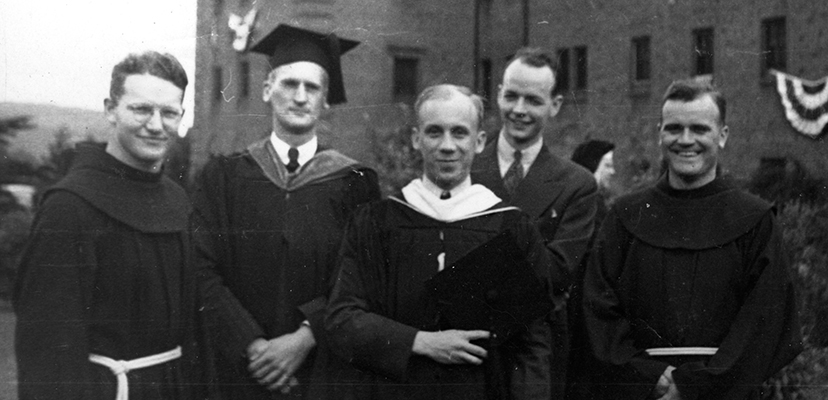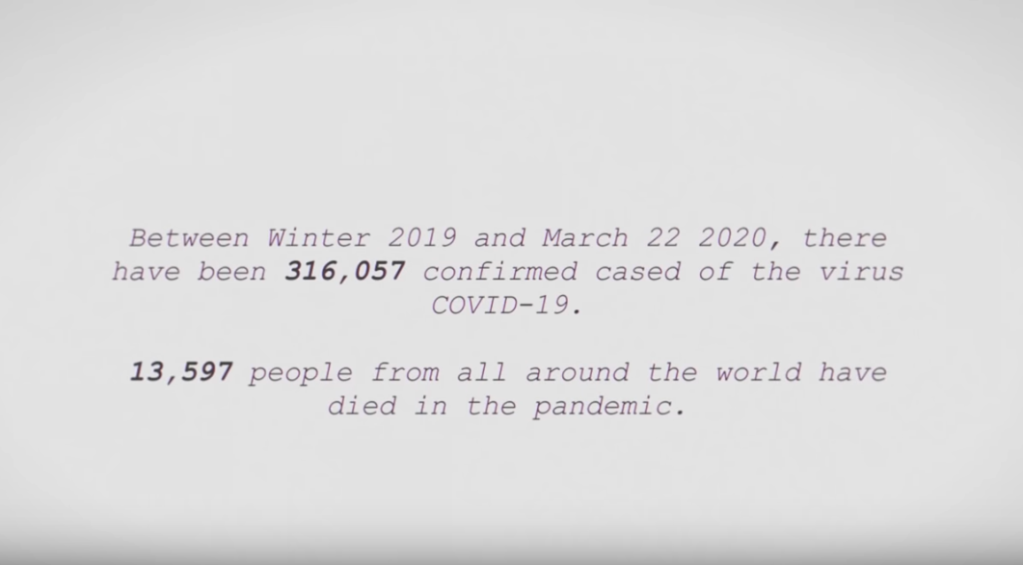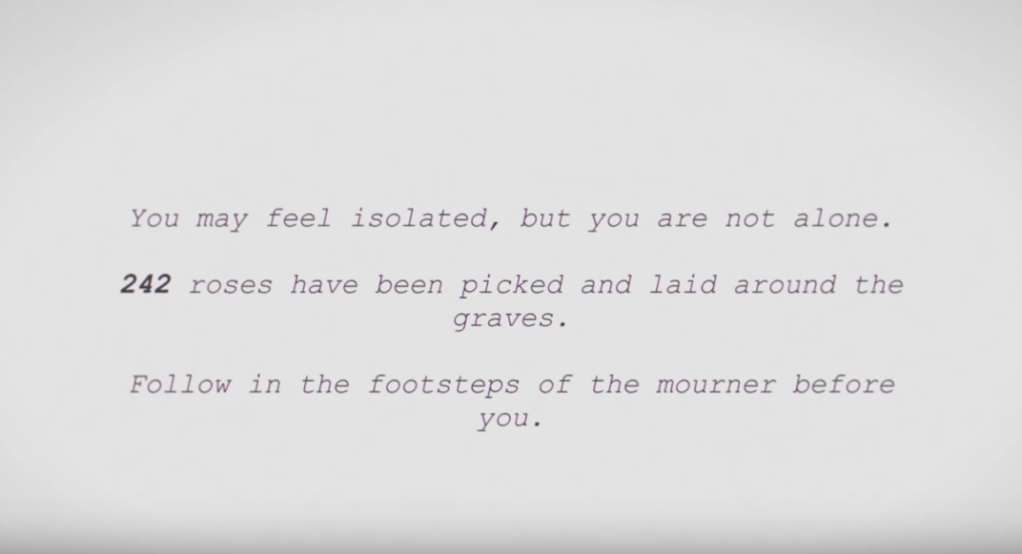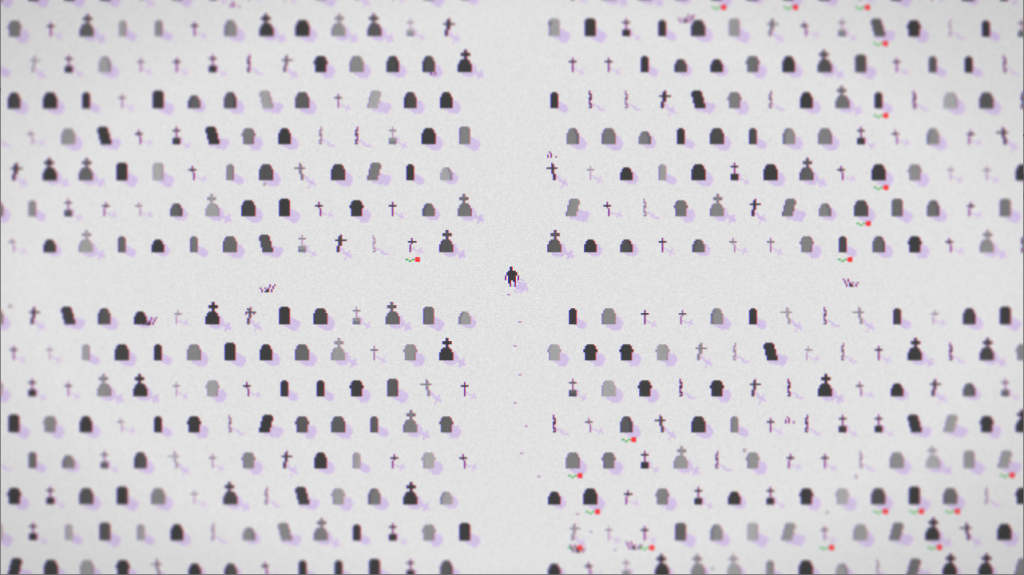“There is a pleasure in the pathless woods,
There is a rapture on the lonely shore,
There is society, where none intrudes,
By the deep sea, and music in its roar:
I love not man the less, but Nature more,
From these our interviews, in which I steal
From all I may be, or have been before,
To mingle with the Universe, and feel
What I can ne’er express, yet cannot all conceal.”
-Lord Byron
Watson Talk Slides
Starting off a reflection about social media with a quote from Byron about the solitude of nature seems counter intuitive. A “society, where none intrudes” clashes with the usual rhetoric surrounding the networked culture of digital spaces, and the “lonely shore” and “pathless woods” probably lacks WiFi–or broadband.
But bringing in Byron highlights the paradox of place that the Internet and digital technology brings. We are networked selves, accessing the Internet in multiple ways from multiple places or portals, as our physical self continues to take up space and air “irl.” And much like the narrative locales of Romantic poetry, many digital spaces are constructed and emergent.
Byron’s saga traces the physical geography of Southern Europe, but Byron’s textual place–his “pathless woods” and roaring sea–arrive at us in ephemeral language through his poetry. They are authored locales. Phrased another way, one can visit the spaces where he allegedly traveled while writing Childe Harolde Pilgrimage, but those irl locations—the rocks, the rivers, the trees, the moss-laced logs—all of these differ from the locations that we envision when reading or hearing his poetry—nor are they constant over time, like the printed word. Language both signifies and creates locales.
Similarly, I think that the quality of born-digital space forces us to look at space as an ephemeral, emergent gathering. Websites may have a url pinning them down and servers in world sucking up power and taking up space, but we largely experience them more subjectively. In his later work, Martin Heidegger discusses the notions of “location” (or “locale”) and “space.” As he writes in “Building, Dwelling, Thinking”:
“The location is not already there before the bridge is. Before the bridge stands, there are of course many spots along the stream that can be occupied by something. One of them proves to be a location, and does so because of the bridge. Thus the bridge does not first come to a location to stand in it; rather, a location comes into existence only by virtue of the bridge.”
The bridge in this example, by being constructed, is opening a “location,” a significant site where different elements can gather and be. One can look at the bridge as a concrete space of possibility, a site that can direct meaning at some level in ways that an unmarked, undeveloped area cannot. Before the bridge exists, the area is just a “spot.” Things are happening in it, but nothing is built there. And with no building–or inscribed significance, like a park or childhood memory–the place feels anonymous.
On the one hand, this is obvious, and Heidegger’s obscure thinking may over-complicate the matter. But I think it gets at something important: how construction creates a fundamentally new reality at a site. Before the bridge, the space was simply “nature” or a river bend. Now, the bridge may have a name. It serves a human purpose for commerce. Lovers add locks to it. It may be in a film. It may represent a certain style or culture. It interacts with the nonhuman environment, deflecting rain and providing shelter for animals.
In Heidegger’s thought, a “thing,” like a bridge, is not an inert site of stone and steel. Drawing from the older use of thing in Icelandic and Germanic language, “Ting” and “Ding” respectively, thing is a site for an assembly, a gathering of people to reach decisions. With thinkers like Bruno Latour and Thomas Rickert picking up on this use more recently, I think we can look at Internet architecture with a similar dynamism.
A site is often even more of a “thing,” in this sense, than Heidegger’s bridge. It is a place for gathering. And in that gathering, a fundamentally location-attuned way of being arises through the interplay of different forces. As Nancy Baym argues in “The Emergence of On-Line Community,” online communities are emergent rather than dictated. As she writes, “Social organization emerges in a dynamic process of appropriation in which participants invoke structures to create meanings in ways that researchers or system engineers may not foresee.” Participants inherent certain structures or systems, Baym points out, and users dwell in and add to these initial elements to construct social practices and communal spaces. Location emerges. The community of individual authors writes and is written by the location.
But I want to turn, particularly, to authorship.
As Jessica Reyman argues in “Authorship and Ownership,” such spaces are often “co-authored” by algorithms and multiple people. By drawing from user data—as they point, click, and brows the digital spaces—algorithms tailor adds, curate feeds, and allegedly cocoon users in “filter bubbles” of easy-to-consume content, all the while drawing meta data for marketing and research. Today, this data mining and site curation is commonplace, and though scandals brought by Cambridge Analytica and others have brought renewed scrutiny, Reyman offers an important perspective. She argues that users have a right to this data: they are the ones creating it, while corporations profit off it. This sort of free labor, sometimes fit under the term “playbor” abounds in the Internet. As Andrew Ross argues, “The social platforms, web crawlers, personalized algorithms, and other data mining techniques of recent years are engineered to suck valuable, or monetizable information out of almost every one of our online activities” (15).
The relationship between authorship and labor has had a pronounced history leading back to the Statute of Anne in 1710 and the tensions of “intellectual property.” The image of the gentlemanly author plucking inspiration from muses and native genius to create new ideas, taken down in print, remains a sticky one. Today, if one follows Reyman’s argument, we are all authors at some level, as our being-in-the-(digital)-world adds to that world, co-authoring these spaces through our content creation and meta-data. Considerable playbor takes place in the form of Instagram posts, linking to articles, fanfiction, videogame modding, and more. Indeed, part of the reason that videogame companies endure the cottage industry of streamers and walkthroughs is for the free publicity it provides, and it has been common place since the 90s to collect and re-release content created by fans for company profit. Turn-it-In also owns student work, creating a financial empire from the labor of student writers.
In the more material sense, in terms of dollars and cents, this is a problem, but I want to take it to a somewhat deeper level–first addressing the authoring on the other side.
As philosopher Daniel Estrada wrote in a Medium article on filter bubbles, “in a very deep sense, you are your bubble. The process of constructing a social identity is identical to the process of deciding how to act, which is identical again to the process of filtering and interpreting your world.” While I would argue that identity is more than “the process of deciding how to act,” a point that I reckon Estrada would likely recognize, I think it definitely plays a central role. Sartre put it best: “We are our choices.” Our choices have echoes, and sometimes those echoes etch our being–or how others view our being.
But Estrada goes on: “any constraints imposed on your filter are also constraints on your possibilities for action, constraints on the freedom of your decisions and the construction of your world. If you are your bubble, then any attempt to control or manipulate your bubble is likewise an attempt to control you.” As technology ethicist Tristan Harris puts it, you may get to decide what you eat in these platforms, but they provide the menu.
Again, this has implications as we consider our selfhood or identities. While for Kant, the self is largely insular, cognitive, sensory, and self-contained, thinkers continue to argue, from a Buddhist metaphysics of emptiness to Diane Davis in Inessential Solidarity and Thomas Rickert in Ambient Rhetoric that the self is more osmotic or relational. It is permeable and messy, bundled and blurry, oozy and diffuse, yet localized by language and materiality. As Rickert puts it, we don’t just live in a world, we are enworlded.
And here come the algorithms. These too, if you want to go this way, are part of us, and so is the digital pathways they “co-author” from our metadata. To use Kant’s term, this digital world informs–or possibly is–our phenomenological experience and the self that this experience informs. In many cases our digital selves are ourselves—networked and saturated by technology and the nameless bots and programs in the background. And as both Reyman and Estrada point to, we don’t really own, or fully understand, these algorithms. Eusong Kim has argued about trending, for example: “We don’t know why something trends. The algorithm is a locked secret, a “black box” (to the point where MIT professors have built algorithms attempting to predict trending tags). The Fineprint: Trending is visibility granted by a closed, private corporation and their proprietary algorithms.”
This leads me back to Reyman’s view on data and our ownership of it. As we live in a more English model of copyright, economics and law tend to steer the conversation. But as this digital composing infuses our lives, both the deliberate messages we send out and the co-authoring of our data, issues of ownership, autonomy, and originality come to the forefront—especially that of ownership. Who owns our data is not just an issue of privacy, but it is an existential one. As our being-in-the-world co-authors and becomes entangled with our personas and places online, so do our selves. Just as England wrestled with the intellectual labor and textual ownership of traditional authors, we face a world in which our own ideas and our own digital being has become monetized and divested from our hands. Despite efforts by Facebook and others to allow us to see our data or have more input on our privacy and feed, a fundamental structure of black-boxing already exists, persistent through law and custom, to own and profit from our online meanders and statuses—and filer our own experience and online localities.
As we make paths in this pathless wood, Facebook profits and shapes the woods around us.














